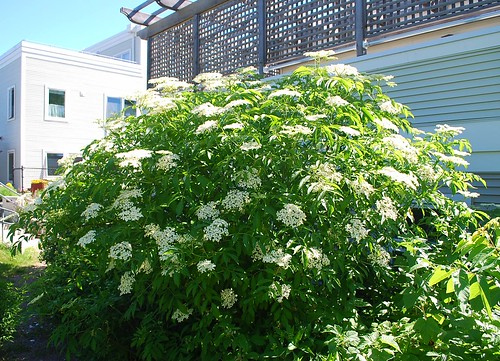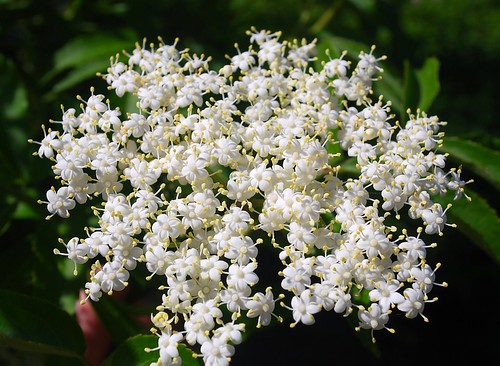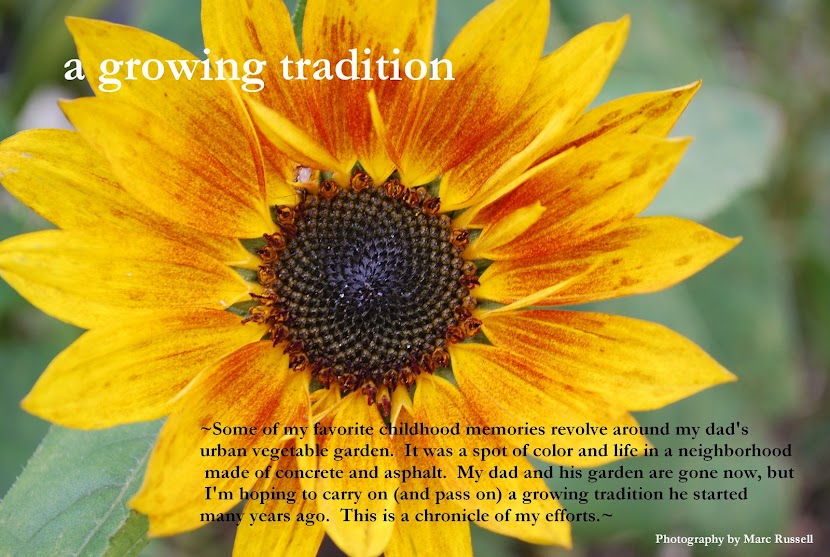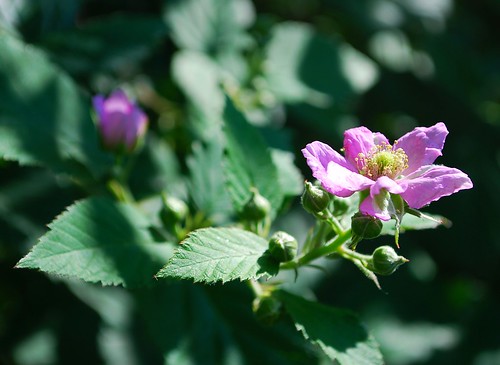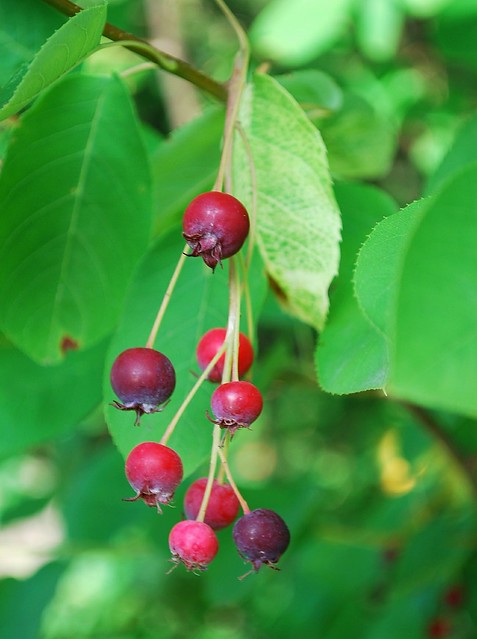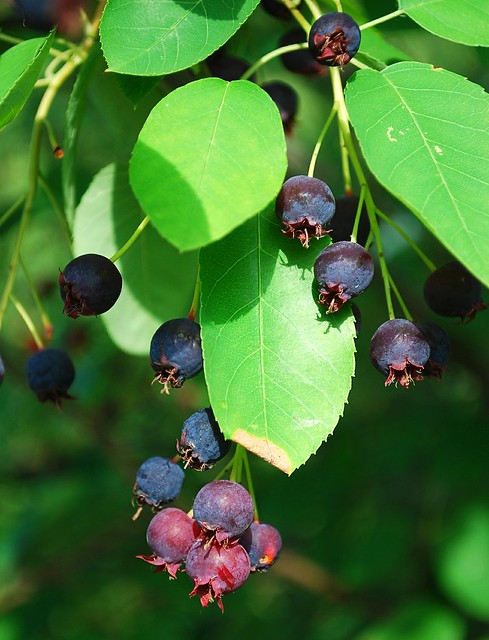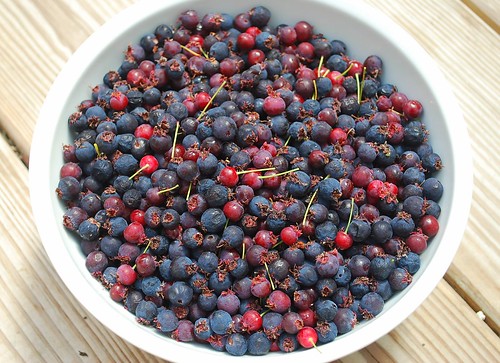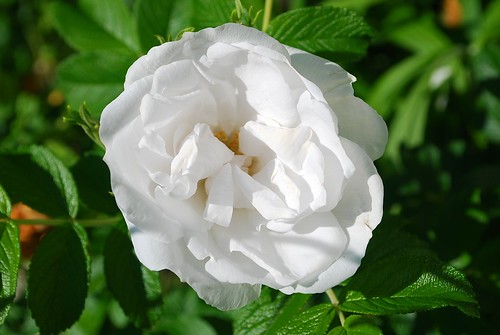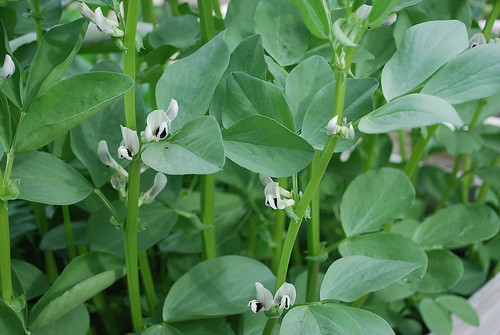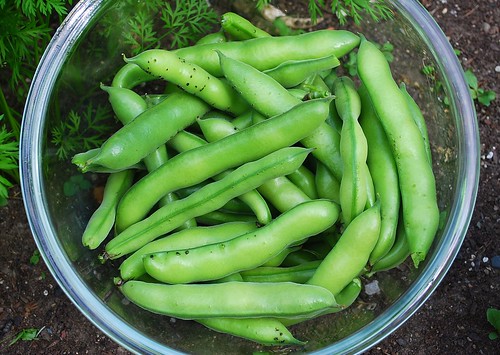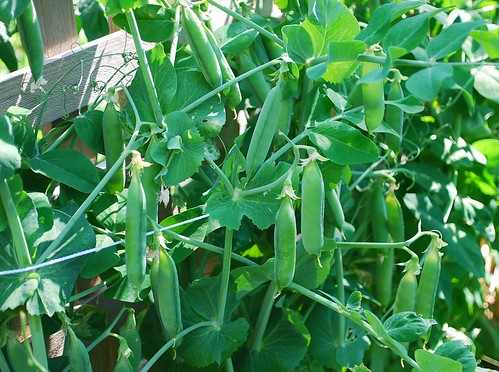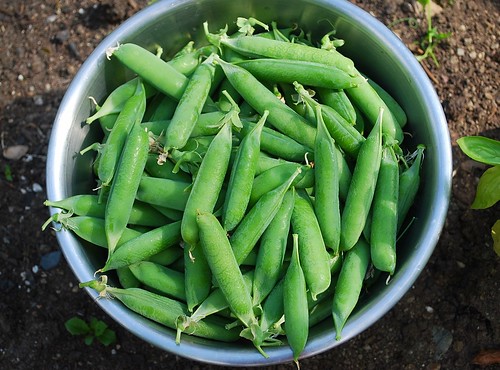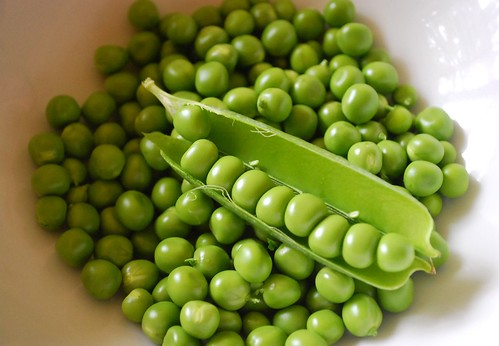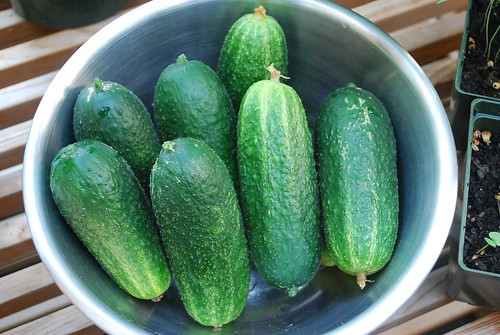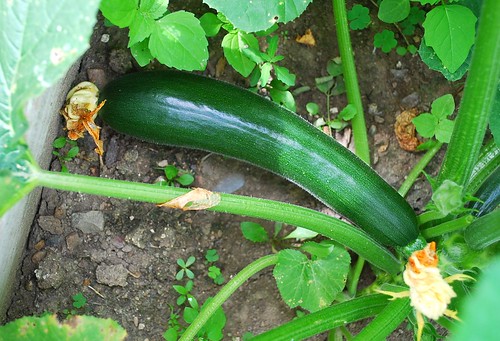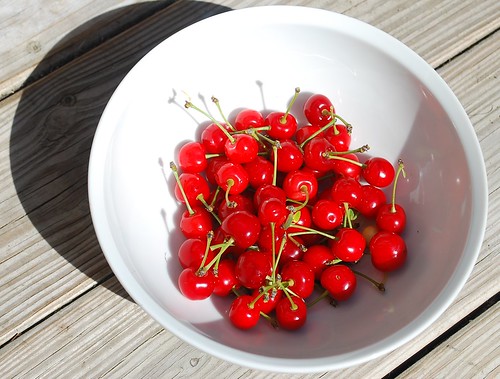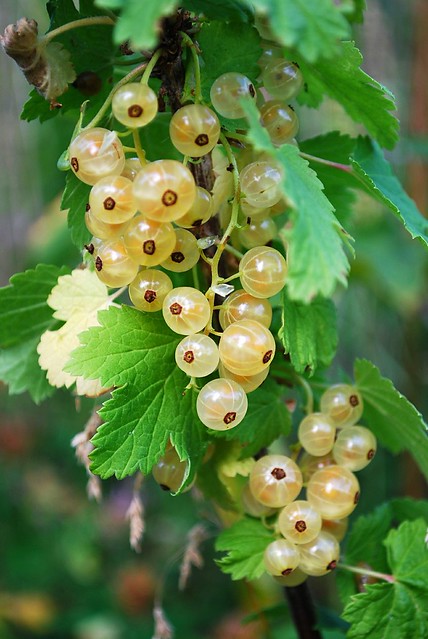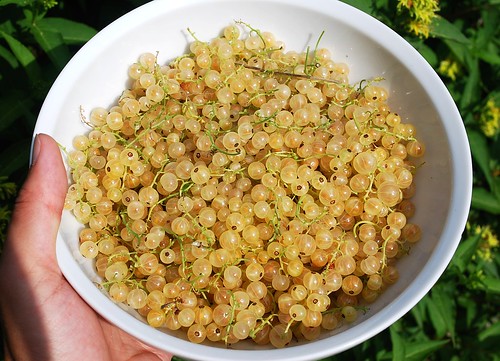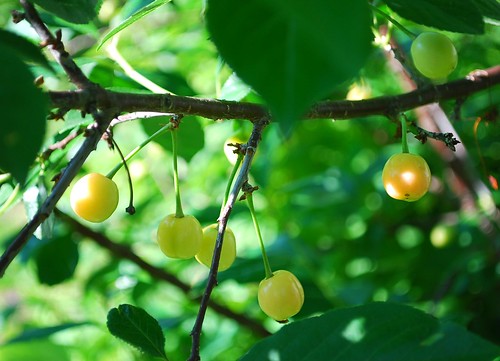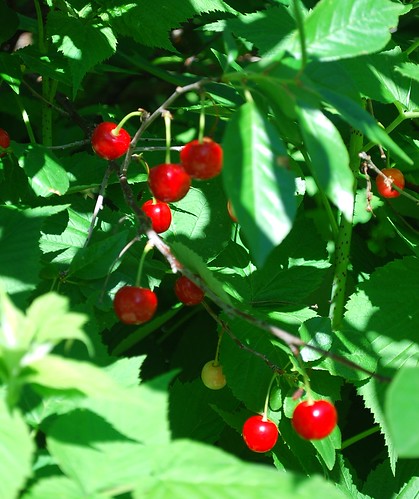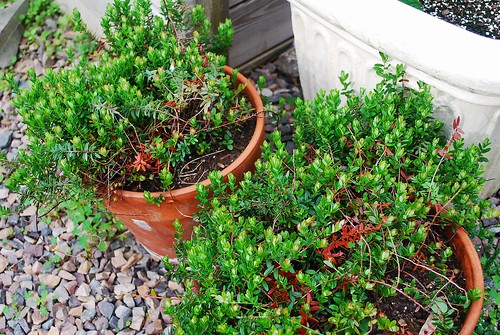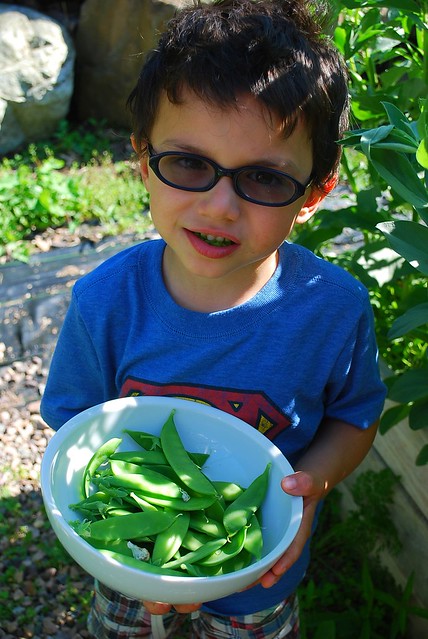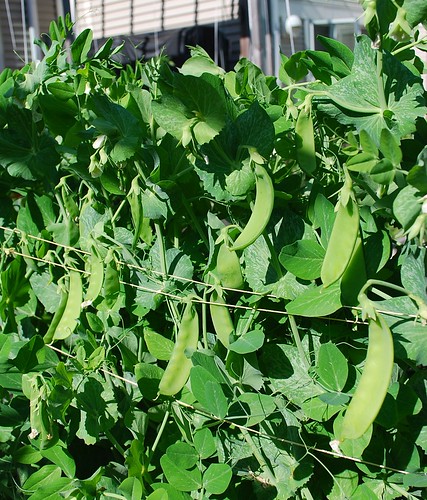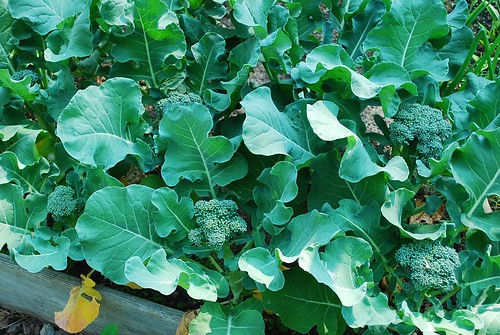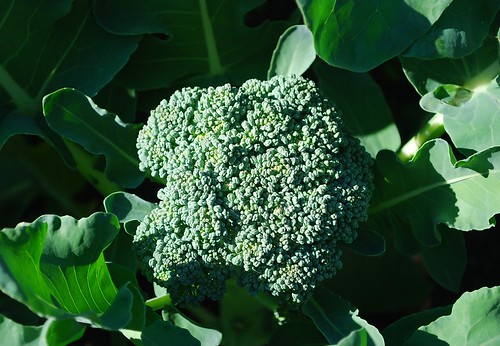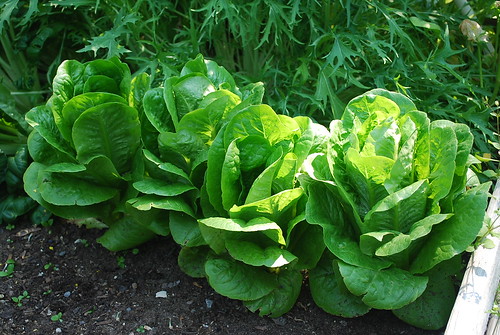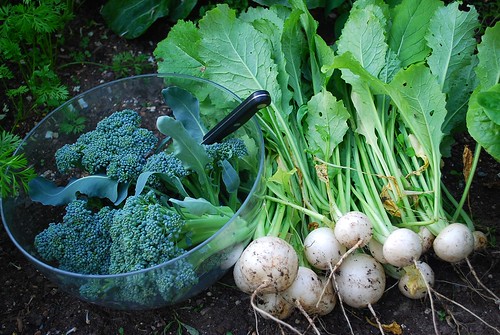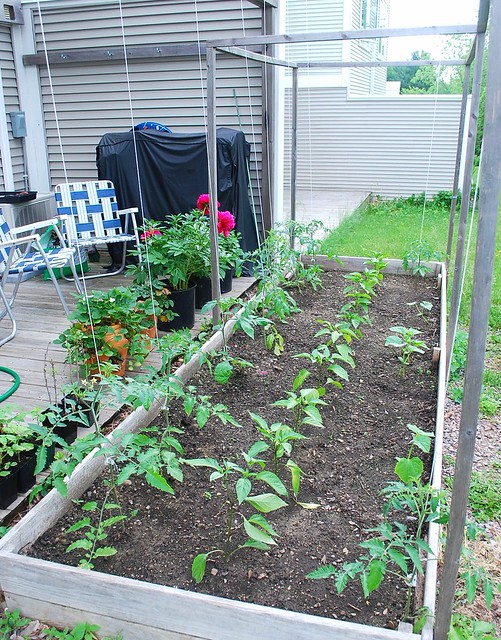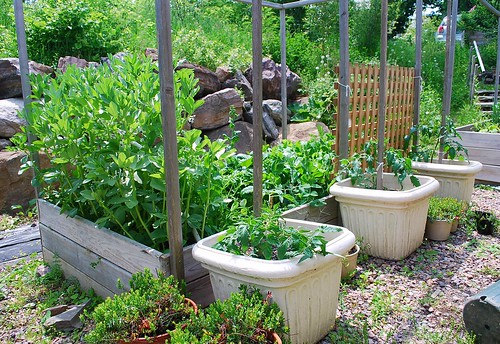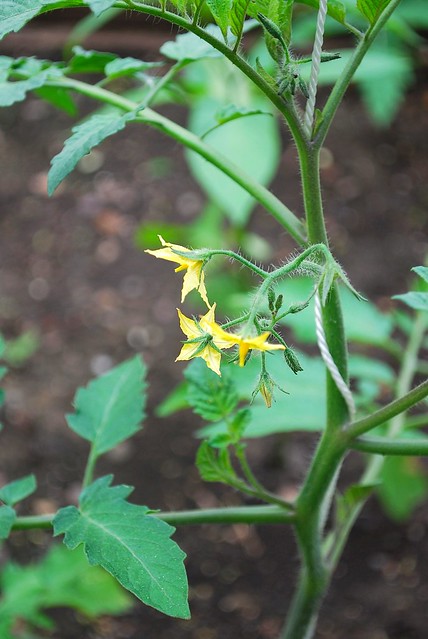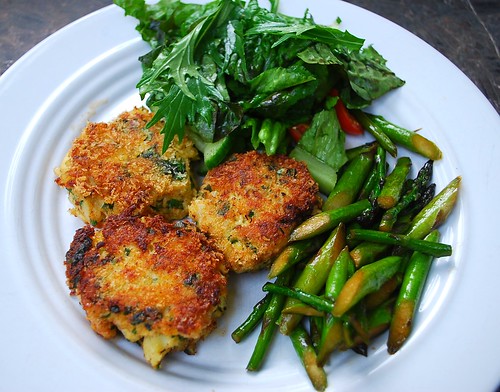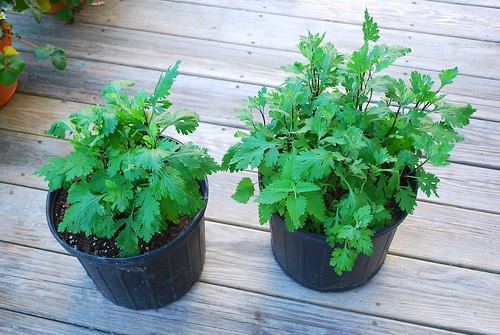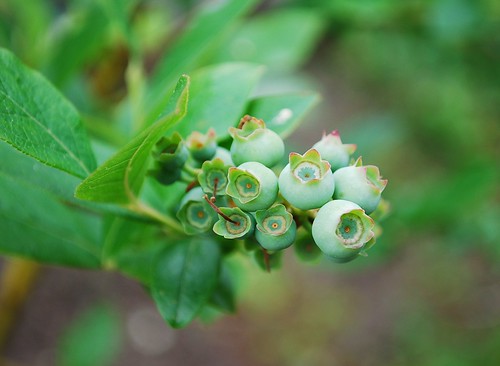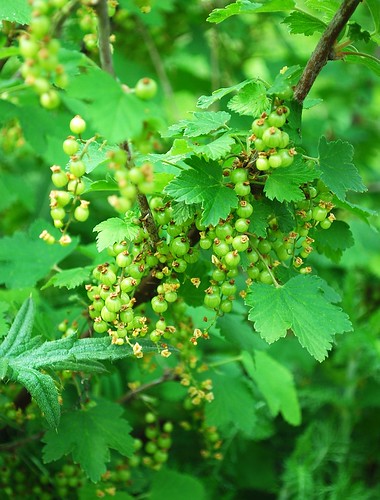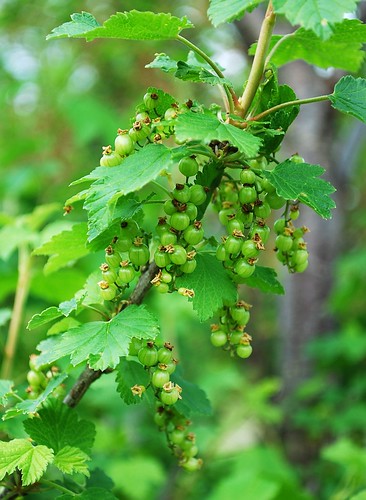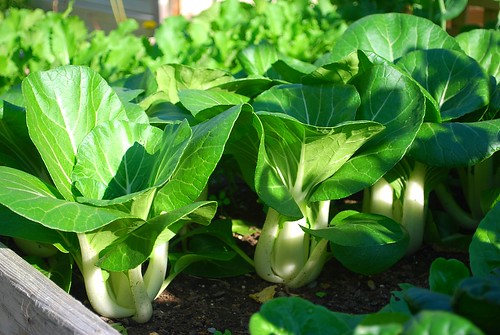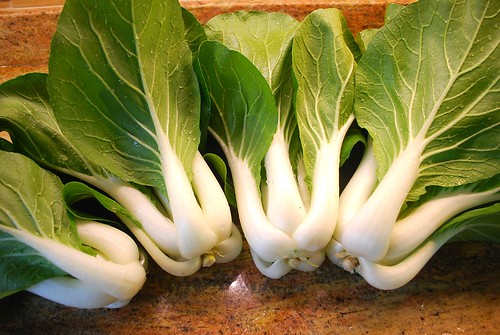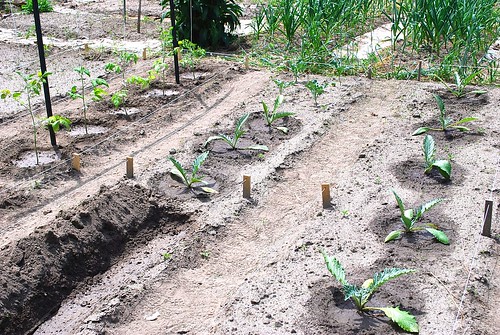
When Borders bookstore went out of business last year, I made several trips during the last few weeks of its life to raid the gardening and cooking sections. When all was said and done, I ended up with a large stack of books, and Terry Garey's "The Joy of Home Winemaking" was one of them.
I've been wanting to learn the craft of home winemaking for a while now. I think it all started when I watched the movie Anne of Green Gables on PBS (I think I was about 10 years old at the time) and was intrigued when a young Diana Barry, with a little help from Anne, got drunk off of Miss. Cuthbert's homemade red currant wine. Fast forward twenty years later, I bought my first bottle of red currant wine from a local farm while we were living in Massachusetts, and well... let's just say I wasn't exactly smitten with the stuff. The flavor of the wine was fine enough, but it was awfully sweet. I began to think that most commercial fruit wines were produced this way and unfortunately for me, I prefer my wines on the drier end of the spectrum.
Anyway, not too long ago, it dawned on me that all of our currant shrubs (courtesy of our landlord) might produce enough fruit this year to kick start this new endeavor of mine. If the birds stay away, I think we'll have enough red, white and black currants to make several gallons of wine. Like most hobbies (gardening being one of them), I'm expecting a steep learning curve in the beginning and lots of terrible wine along the way. But I've always believed that it's partly the mistakes that make learning a new craft all the more interesting and exciting.
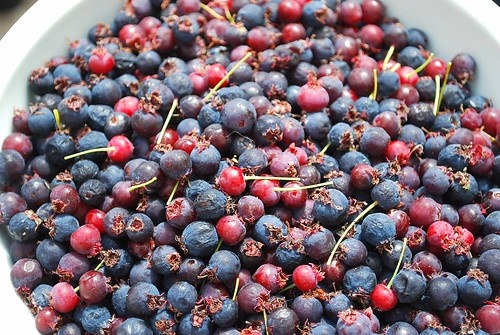
I was expecting that my first wine would be made from currants, but thanks to our kind neighbor who introduced me to them, it will be made from most of the juneberries I picked this past weekend. It seems somehow more fitting that my first attempt at making wine would involve a wild edible fruit. I'm sure this was how it was done centuries ago before the first European wine grapes were ever cultivated. And it just so happens that I found a
recipe (or should I say 'guide') for making juneberry wine online. (
Jack Keller maintains a rather impressive site containing tons of recipes and advice for winemaking novices.)
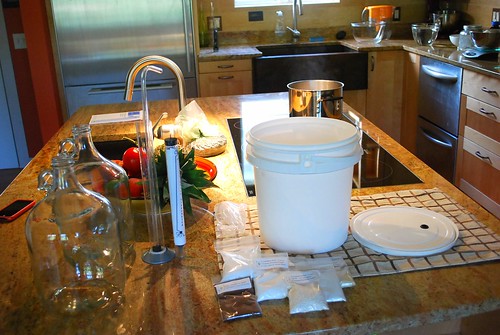
Last Saturday, we made a trip to the
Vermont Homebrew Store to set some supplies (a convenient 5 minute drive from our place). I spent about $75 but I'm sure you could get started on much less depending on what you already have lying around the house. (Jack Keller has a great
list of basic supplies you would need in order to get started.) In fact, one of our neighbors kindly gave me a one gallon glass apple juice jug to use during the secondary fermentation stage of this project. (I don't think I'll make any batches larger than a gallon until I get the hang of this as one gallon of awful wine down the drain is not as heartbreaking as say three or five.) I've also sent word to a few of our friends to save their empty wine bottles.
I won't go into detail about what I've learned so far about the basics of home winemaking as I am in no position to be giving any sort advise on this subject at this point of the game, but I thought I'd at least describe what I did, along with my observations, here more for my own sake than anything else (in the event this wine actually turns out well). In any case, I woke up early on Sunday to get things started. I ended up using the ingredients listed in Jack Keller's third recipe but referred to some of the advice given in Terry Garey's book when putting it together.

I started out by mashing 3 lbs of juneberries in a large pot and brought it to a boil along with 6 cups of water and the juice of 2 lemons. After it simmered for about 10 minutes, I poured it into a nylon jelly bag that I'd placed inside my primary fermenter. Then I brought another 8 cups of water to a boil, into which I dissolved 2 1/2 lbs of sugar, and poured this into my primary as well. Into this mix I added 1 lb of minced raisins in a second jelly bag. I then covered the bucket and allowed it to cool down for a couple of hours. When the mixture (or 'must') was lukewarm, I stirred in 1 teaspoon of yeast nutrient and 1 crushed Campden tablet, which I'd dissolved in a small amount of the must first. (I did notice that the color of the must lightened a bit when I added the tablet, but it still retained much of its ruby red color.) Then the top went back on but this time fitted with an airlock.
At this point, there was a strong yet lovely scent of almonds or amaretto to the must, which I'm sure was imparted by the seeds. The smell subsided after it sat for a while and I was afraid that the addition of the raisins would overpower the flavor of the juneberries. I guess I'll find out eventually.
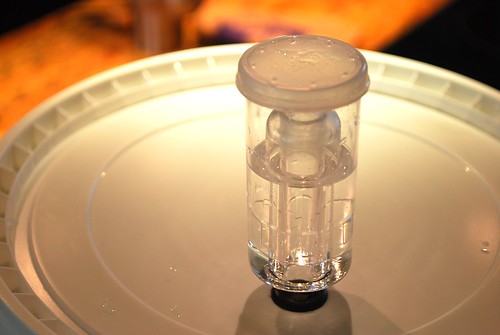
Twelve hours after I added the Campden tablet, I stirred in 1 teaspoon of pectic enzyme and recovered (late Sunday night). Twelve hours later, I sprinkled a packet of Champagne yeast over the surface of the must and recovered again. Within a few hours, I could tell that fermentation was starting as the airlock started to release gas.
Marc has been given the task of giving the must a gentle stir once a day while I'm away. After 5 days, the nylon bag containing the juneberries will be removed and the must will be allowed to ferment for another 5 days before the raisins are removed and the must is siphoned to the secondary fermentation vessel if all goes well. I'll be sure to provide updates as we go along.
(In case you're interested, here is a
glossary of basic winemaking terms.)
